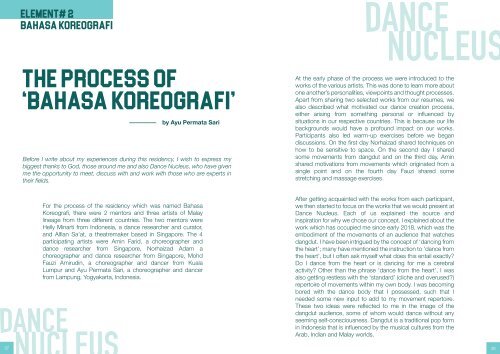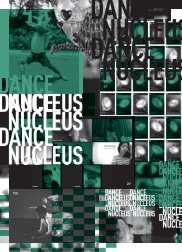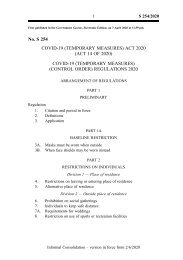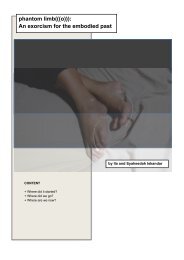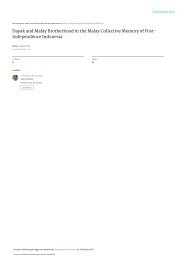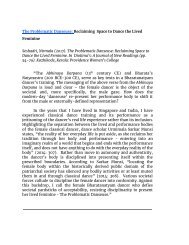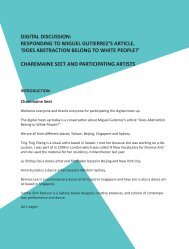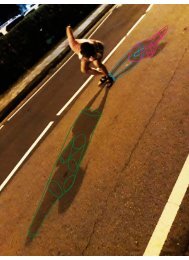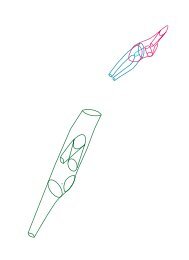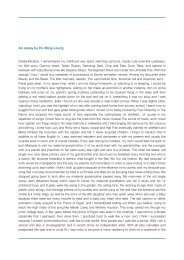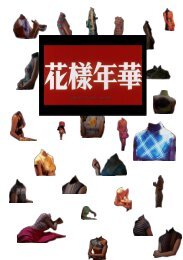FUSE#2
FUSE is a bi-annual publication that documents the projects at Dance Nucleus .
FUSE is a bi-annual publication that documents the projects at Dance Nucleus .
You also want an ePaper? Increase the reach of your titles
YUMPU automatically turns print PDFs into web optimized ePapers that Google loves.
Element# 2<br />
BAHASA KOREOGRAFI<br />
The Process of<br />
‘Bahasa Koreografi’<br />
by Ayu Permata Sari<br />
Before I write about my experiences during this residency, I wish to express my<br />
biggest thanks to God, those around me and also Dance Nucleus, who have given<br />
me the opportunity to meet, discuss with and work with those who are experts in<br />
their fields.<br />
At the early phase of the process we were introduced to the<br />
works of the various artists. This was done to learn more about<br />
one another’s personalities, viewpoints and thought processes.<br />
Apart from sharing two selected works from our resumes, we<br />
also described what motivated our dance creation process,<br />
either arising from something personal or influenced by<br />
situations in our respective countries. This is because our life<br />
backgrounds would have a profound impact on our works.<br />
Participants also led warm-up exercises before we began<br />
discussions. On the first day Norhaizad shared techniques on<br />
how to be sensitive to space. On the second day I shared<br />
some movements from dangdut and on the third day, Amin<br />
shared motivations from movements which originated from a<br />
single point and on the fourth day Fauzi shared some<br />
stretching and massage exercises.<br />
For the process of the residency which was named Bahasa<br />
Koreografi, there were 2 mentors and three artists of Malay<br />
lineage from three different countries. The two mentors were<br />
Helly Minarti from Indonesia, a dance researcher and curator,<br />
and Alfian Sa’at, a theatremaker based in Singapore. The 4<br />
participating artists were Amin Farid, a choreographer and<br />
dance researcher from Singapore, Norhaizad Adam a<br />
choreographer and dance researcher from Singapore, Mohd<br />
Fauzi Amirudin, a choreographer and dancer from Kuala<br />
Lumpur and Ayu Permata Sari, a choreographer and dancer<br />
from Lampung, Yogyakarta, Indonesia.<br />
After getting acquainted with the works from each participant,<br />
we then started to focus on the works that we would present at<br />
Dance Nucleus. Each of us explained the source and<br />
inspiration for why we chose our concept. I explained about the<br />
work which has occupied me since early 2018, which was the<br />
embodiment of the movements of an audience that watches<br />
dangdut. I have been intrigued by the concept of ‘dancing from<br />
the heart’; many have mentioned the instruction to ‘dance from<br />
the heart’, but I often ask myself what does this entail exactly?<br />
Do I dance from the heart or is dancing for me a cerebral<br />
activity? Other than the phrase ‘dance from the heart’, I was<br />
also getting restless with the ‘standard’ (cliche and overused?)<br />
repertoire of movements within my own body. I was becoming<br />
bored with the dance body that I possessed, such that I<br />
needed some new input to add to my movement repertoire.<br />
These two ideas were reflected to me in the image of the<br />
dangdut audience, some of whom would dance without any<br />
seeming self-consciousness. Dangdut is a traditional pop form<br />
in Indonesia that is influenced by the musical cultures from the<br />
Arab, Indian and Malay worlds.<br />
37 38


